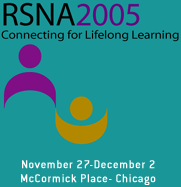
Abstract Archives of the RSNA, 2005
Santosh Tumkur, Presenter: Nothing to Disclose
Anthony Vu PhD, Abstract Co-Author: Nothing to Disclose
Luping Li PhD, Abstract Co-Author: Nothing to Disclose
Linda Pierchala, Abstract Co-Author: Nothing to Disclose
Pottumarthi V Prasad PhD, Abstract Co-Author: Nothing to Disclose
To evaluate the temporal response of intrarenal oxygenation following administration of furosemide and water in healthy human subjects utilizing a 3D mGRE sequence at 3.0T.
Five volunteers, four female and one male(22 ± 1.2 years old), who fasted for at least 12 hours participated in this study with informed consent. The changes in the BOLD MRI parameter R2* (=1/T2*) can be interpreted as changes in tissue pO2. For the furosemide studies, 20 mg of Lasix was administered intravenously after the baseline scans. For the waterload studies, subjects were taken out of the magnet after the baseline measurements, and asked to drink 20 mL of water per Kg of body weight within 15 minutes. Data were acquired once every two minutes for 15 to 60 mins post-maneuver.
A 3.0 T Twin Speed scanner with Excite technology (GE Medical Systems, Milwaukee,WI) was used with a 3D mGRE sequence with 8 echoes (TR/TE/Flip Angle/BW/slice/Matrix = 25.5 ms/1.86-22.9 ms/10º/83.3 kHz/5 mm/256 x 128 and 36 to 42 cm FOV with 80% phase FOV) to acquire 8 T2* weighted images (6 slices) within a single breath-hold of 23 seconds. R2* maps were constructed by fitting a single exponential function to the signal intensity vs echo time data. About 40 regions of interest (ROIs) covering at least 20 pixels were drawn on the anatomic template from the 6 slices acquired and two kidneys per person.
Furosemide led to a large change in R2* in the medulla within 10 mins (26.4 ± 2.0 to 17.5 ± 0.7 1/s (mean ± std.dev)) compared to the cortex (14.2 ± 1.2 to 13.2 ± 0.6 1/s). These changes reached statistical significance by two-tailed paired Student’s t-test.
Due to significant subject variability in the temporal response following waterload, no such group analysis was performed. In each individual subject there was a statistically significant change in R2* post-waterload, even though the time to peak was different between subjects.
The results with 3D mGRE sequence are consistent with our previous data with furosemide and waterload obtained with 2D mGRE and at 1.5T. The relatively fast acquisitions allowed us to follow the temporal responses following each maneuver.
A.V.: Tony Vu is an employee of GE Healthcare
Tumkur, S,
Vu, A,
Li, L,
Pierchala, L,
Prasad, P,
Evaluation of Intrarenal Oxygenation at 3.0T Using 3D mGRE Sequence. Radiological Society of North America 2005 Scientific Assembly and Annual Meeting, November 27 - December 2, 2005 ,Chicago IL.
http://archive.rsna.org/2005/4412626.html

